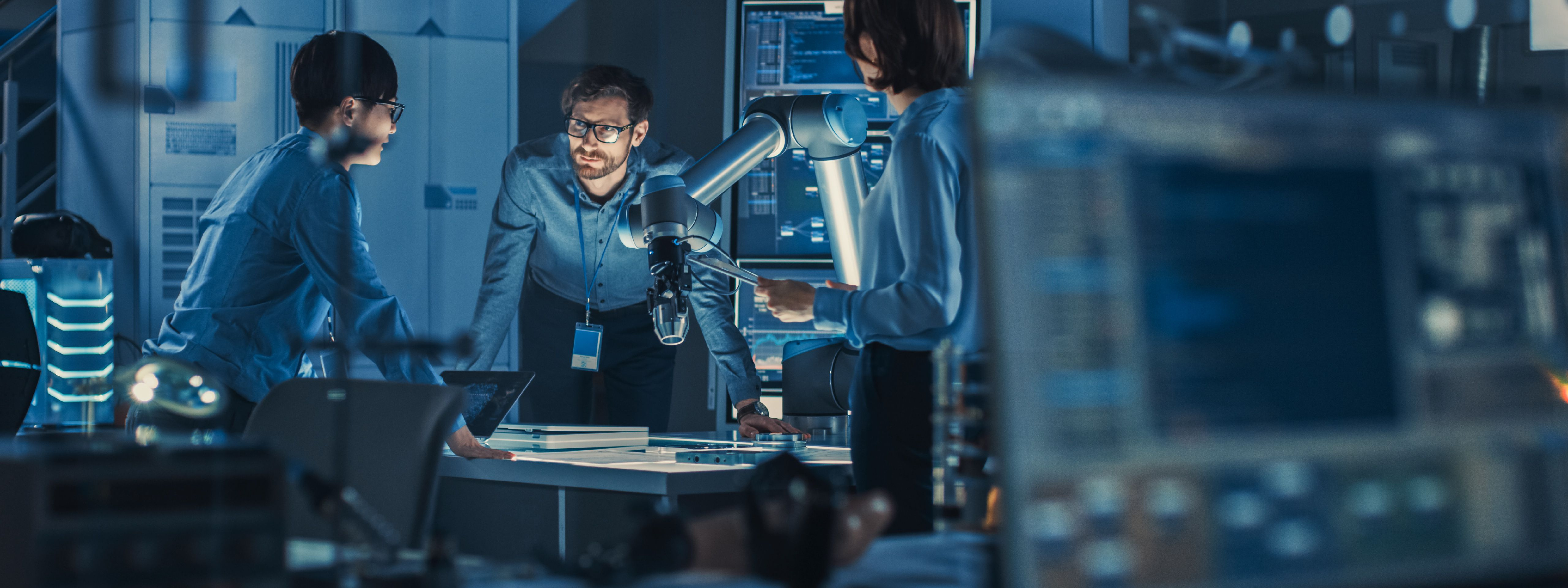The Mechatronics and Robotics industry is synonymous with the rapid advances in technology of the 21st century, and the R&D Tax Incentive is one significant initiative that is driving development in this constantly evolving environment.
If you work in this area you should know about Tax Incentives for Mechatronics and Robotics. Artificial intelligence (AI), autonomous vehicles, the Internet of Things (IoT), smart devices, control algorithms — the fact that much of this vocabulary from the realm of Mechatronics and Robotics may not have been in wide use a decade ago, much less 20 years ago, indicates that this area is evolving quickly, and R&D is front and centre in this evolution.
Given that the field of Mechatronics (originally coined as a portmanteau of mechanics and electronics) covers the engineering of electronic, electrical and mechanical engineering systems, and also includes a combination of robotics, electronics, computer, telecommunications, systems, control, and product engineering, this is exactly the kind of industry that the Australian government wishes to encourage with its generous R&D Tax Incentive (RDTI), which seeks to boost company competitiveness, improve productivity, and deliver economy-wide benefits to Australia.
In addition, the Australian government has earmarked $1.3 billion over a four-year period from first half of 2021 — to help manufacturers upscale their businesses, turn concepts into finished products and integrate into global supply chains. Given Australia’s high labour costs, this almost certainly means the increased presence of mechatronic and robotic systems, providing the increased productivity and efficiency essential for a resurgence in Australian manufacturing. As Industry Minister Karen Andrews said: “By playing to our strengths, strategically investing and boosting the role of science and technology in industry, we can open up new markets and take more of our quality products to the world.”
What expenditure can my company claim as part of our Mechatronics/Robotics R&D?
Expenditure associated with Core and Supporting R&D activities can be claimed as part of the RDTI. Core R&D activities are experimental activities, whose outcome can only be determined by applying a systematic progression of work that proceeds from a hypothesis/hypotheses to experiment, observations and evaluations, and leads to logical conclusions. The purpose of the R&D must be to generate new knowledge.
- Some examples of areas of expenditure that can be claimed as contributing to Mechatronics/Robotics Core or Supporting R&D activities include:
- Building of prototypes that will be used in the experimental activities
- Salaries/payments to staff or contractors who conduct design and development activities, as well as project managers and administrators
- A proportion of overheads incurred in the R&D activities, for example the rent or lease of facilities used to conduct R&D, energy costs and software licences used in experimental designs etc.
- Depreciation of plant and machinery to the extent they were used in the conduct of eligible R&D activities
What records or information should we keep of our R&D?
In scientific research, the “publish or perish” attitude is well known, but for the RDTI we could perhaps modify this to “record or regret”. Although the RDTI legislation does not prescribe the types of supporting evidence that should be recorded or maintained by an RDTI claimant, it is clear that such evidence or records must be gathered. Valid records for the purpose of claiming the RDTI are any records that verify or contribute to calculating your claim and it is imperative that you have records detailing the ‘unknown outcomes’, ‘new knowledge’ sought, and hypothesis/hypotheses for the experimental activities.
All your photos, notes, written or oral observations recorded, and diary entries are important artefacts that serve as proof of what was done and could be used as solid contemporaneous evidence in the case of an audit.
Something that will assist in demonstrating that you followed a process based on the principles of established science, is to keep records of your experiments that did not go according to plan (i.e. did not confirm your hypothesis).Whilst failures do not themselves prove that the outcomes of the Core R&D Activities could not have been known or determined in advance, they will assist in making the claim. Although the final aim for many mechatronic/robotic inventions might well be micrometre perfection, the scientific process involved in getting there involves many failures along the way and it is important that these are documented.
Some industry examples of the RDTI powering Mechatronics and Robotics R&D
In the course of developing a 3D robotic bricklaying system, Perth-based Fastbrick Robotics reported a $972k R&D Tax Rebate, following a successful capital raising of $35 million. Their successful R&D program eventually attracted the attention of global machinery giant, Caterpillar, which invested $2.3 million and established a collaboration partnership for development, manufacture and sales of the robotic system.
AOS is a software and robotics company specialising in autonomous and intelligent systems and is a partner in a consortium for developing a novel autonomous mobile robot for weed control to maximise agricultural productivity. As part of the project, which is forecast to continue until 2023, the group received a Cooperative Research Centres Projects (CRC-P) grant of $2,850,000 — these grants support short-term collaborative research projects and are another source of funding that complements the RDTI.
Bluechip Ltd. is a Melbourne‑based manufacturing company that has been developing smart chips, readers and software for low‑temperature environments. Bluechip employs mechatronics experts for certain parts of their R&D activities. As their Managing Director Andrew McLellan surmised, the company’s participation in the RDTI has delivered a number of benefits, the most important being its financial survival:
“As a pre‑commercial company the RDTI allowed us to survive. Without it we wouldn’t be around…Knowing the RDTI is there allows us to manage our cash flow and it has allowed us to pinpoint the timing of our capital raises around events and critical milestones rather than when we’ve needed cash.”
The RDTI program increased the ability of the company to conduct R&D activities by about 20%, provided salaries for eight critical staff members, enabled collaborations with the University of Melbourne and Swinburne University and helped facilitate entry into the US and European Union markets.
Regardless of whether your business’s expertise is Mechatronics, Robotics, Avionics, or researching and developing the next big thing, Fullstack has the expertise to help you navigate your way through the RDTI. Contact us to ensure you obtain all the RDTI benefits you are entitled to.
Was this article helpful?
Related Posts
- R&D Tax Incentives in August with an ‘Advance Finding’
Manage the cash flow responsibly for your tech venture by lodging an Advance Finding this…
- ESIC Tax Incentives for Early Stage Investors
If you invest in a qualifying Early Stage Innovation Company (ESIC), you may be eligible…
- 5 Biggest Questions on Australia’s R&D Tax Incentive
Considering applying for the R&D Tax Incentive? We cover off on the 5 biggest questions…
- R&D Tax Incentive Updates for FY23 per the 2020-2021 Budget
What do recent budget proposals mean for the status of the R&D Tax Incentive in…

















